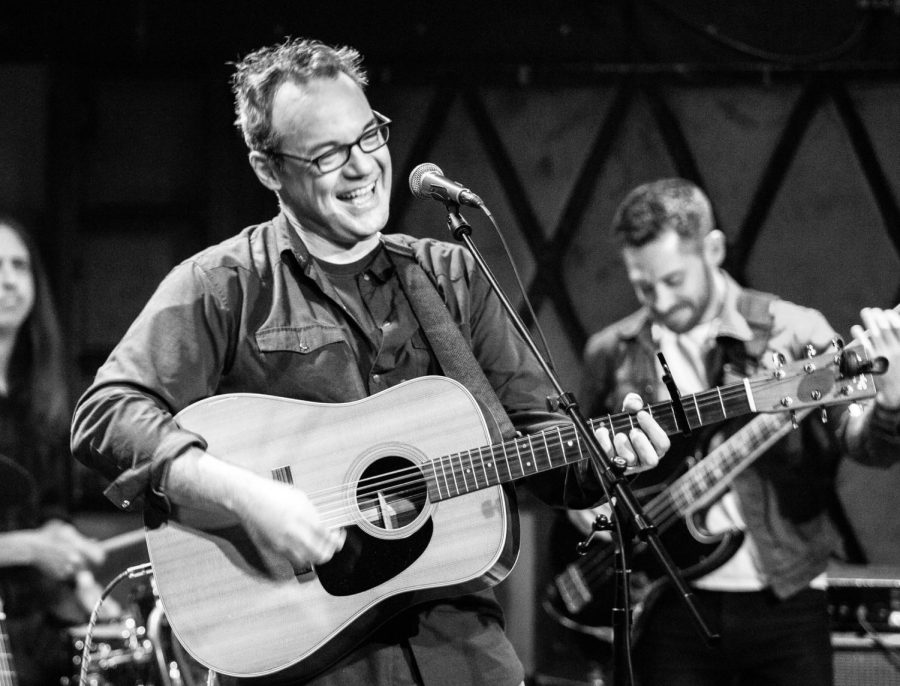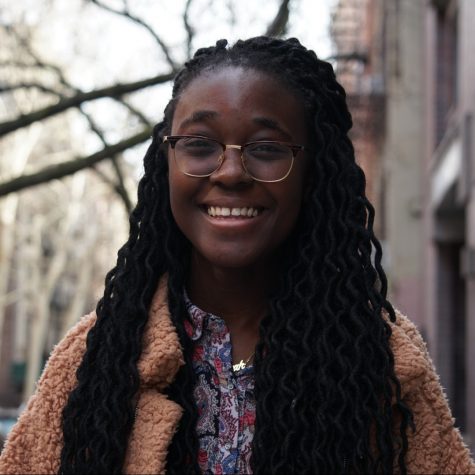Tisch prof reveals music struggles and triumphs in new book
Mike Errico’s book “Music, Lyrics, and Life” compiles lessons learned from his years of teaching students to overcome their fears and doubts as they enter the tumultuous music industry.
Mike Errico is a professor at the NYU Clive Davis Institute of Recorded Music. On Nov. 7, he released his book “Music, Lyrics, and Life: A Field Guide for the Advancing Songwriter,” which features lessons from his years of teaching students. (Image courtesy of Mike Errico)
November 8, 2021
Mike Errico, a professor at the Clive Davis Institute at NYU’s Tisch School of the Arts, released his book “Music, Lyrics, and Life: A Field Guide for the Advancing Songwriter” on Nov. 7. I sat down with Errico to talk about his career and what makes his new book such a special project. The book is now available for sale online and in bookstores. The following interview has been edited for clarity and brevity.
Sarah John: Tell us a little bit about your career path and life as a songwriter and a performer.
Mike Errico: My career path is very discombobulated. I think that is what gives me a unique perspective on the students. I came to the whole thing backwards. I was actually born backwards, literally — I was a breached birth. The joke in my family is that I never really turned around. I backed into songwriting because my dad, who is a pianist, took a pop songwriting course but hated it. He is a classical guy and they were talking about popular music. He didn’t want to get his money back, and I had the same name as him, so I went in his place.
I just sort of showed up the next week. They were like, “Ok.” That’s how I started my songwriting career. I’ve gone on to lots of different record deals and management deals. I’ve toured the country and the world as a performing artist. I’ve written for TV and film. After a bit of that, a dean at another college asked me to speak to the students. They said, “There are a lot of people here who are interested in [songwriting] as a career path.” I was like, “I don’t really know that I know how to [explain] that. I don’t even know what I’m doing. I didn’t go to school for this, I just learned it on the street basically. I learned it in clubs and on the road.”
He wouldn’t take no for an answer. I ended up talking to a group of students. It was kind of a revelation. It was an “aha” moment, that I had something to say to them that was productive. I really enjoyed the dynamic, I really enjoyed being able to help in that small way. I’ve also put out lots of records, and I worked in publishing. I was the online editor of Blender Magazine, which was a music magazine that was considered Rolling Stone’s snarkier younger brother. I did a bunch of that.
I teach from an artist’s perspective. I’m able to talk to students from that perspective with that sort of history behind me. I think I know what they’re thinking about, and I know what they’re scared of and worried about. I was, and am still, petrified of a lot of the same things. It’s funny what changes and what doesn’t as time goes by. There are fears that never leave us because they have evolved over centuries. We’re still nervous about the same stuff. It’s been cool to be a part of it.
SJ: What do you think have been the most meaningful lessons from those experiences?
ME: Especially in music, it’s like you’re constantly walking in the dark. All of the fears and anxieties that are associated with walking in pitch blackness still exist. Having done that, and having seen my way through some of those things, I’ve been able to articulate solutions to students. I’ll get into office hours. There’ll be crying and tears. There are lots of questions. But the questions are not about songwriting. The questions are “How do I do this? I want to do this so badly.”
It’s not like, “I don’t know where to place my chorus.” That’s really not what we’re talking about. It’s “How do I own this and push it forward in a meaningful way?” Those are really philosophical, psychological questions. It’s about how to navigate in open water. It’s really what the art is and also what the business is. It’s a double problem.
I did a lot of research for this book. For artists, I just got this sense that the people who make it are the people who can continue to find a way to stay optimistic, to find a way to compile tools that they can trust. The tools that you trust can be psychological. They can also be something else, like song form. So, if you don’t know where to go, there is an architecture that you can trust and lean on.
That’s the kind of stuff that we talk about. A lot of those lessons are really hard-won. A lot of questions students ask me are things I’ve asked myself and asked my own mentors. I’ve tried to translate that into a book. There are things about architecture and what song form is and all of that. But there’s also: “How do I survive? How do I live life when there are no guardrails at all? I have to trust myself.” That’s the kind of stuff that I learned and that I tried to translate.
The tools are habits that build routine and self-care, like journaling. Every semester someone has either passed or gotten into a tremendously bad health-oriented situation, in a way that is directly attributable to the myths of the artist’s life. I look at my students and I’m like, “Which one of you do I want to have that happen to? Which obituary do I want to read?” The answer is none. Absolutely none.
It’s a lot about how to be imaginative, and inspired, and also not hurting yourself. You know, George Lucas never went into space. He wrote Star Wars. You don’t have to emulate the fake sort of myths of the artist, in order to live that life.
SJ: You bring in a lot of other experts. How do you think that adds to the book?
ME: I do think that if you follow a pursuit in a way that’s very well-intended and deeply focused, you do find out that a lot of things are much closer to one another than not. Many pursuits have much more in common than not. That is why I go to people who are non-musical in the book. I interview a lot of people who have nothing to do with music. I do that in order to amplify the idea and make it non-musical and more universal.
I think that there’s one thing I see with students who want to find out how to carve their own path in music. I say to them that pop music is a form, and if you look over time, there are forms that are a language that is in constant conversation with itself. They freak out about that. They say, “I’m going to write my own language.” So one of the things I wanted to explain to them is that everyone works within forms. To amplify that, I followed the expression “you don’t need to reinvent the wheel.”
A friend of a friend is a mechanical engineer at Goodyear Tire and Rubber Company. I spoke to her. She makes tires. She literally makes the wheel. I asked her, “There you are at Goodyear labs. You’re always coming out with new types of tires. Does anyone ever say, ‘You know what, maybe it’s the shape that’s the problem’?”
Of course, she’s like, “You’re an idiot. All our tires are round for a specific reason, because round rolls.” But songform rolls. The idea of repetition, it works. That’s the way our brain is designed to learn.
SJ: What are some of the things, loosely, that you’re most excited about sharing in the book?
ME: When I was dealing with the edit phase of the book, my first question was “Is this funny? Are you laughing?” Because if you’re not laughing, then I’m not doing this right. So that was my first thing. I wanted to balance funny and informative because without funny no one gives a crap. I think laughter in general is an incredibly powerful and underutilized resource in teaching, in my experience. I think when people are laughing they are more willing to take chances because they feel safer. I try to keep the class, if not rolling in the aisles, at least engaged with a smile. You get more adventurous work that way, and you get weirder answers. I think the weirder answers are ultimately the better in my class. I really wanted to get my in-class voice on the page, so at every stage with the editor I was like, “Is it funny?” I think that was something that really came to light during the writing phase. It’s performative. Teaching is a performative art, but hopefully one where you’re using your powers for good.
A version of this story appeared in the Nov. 7, 2021, e-print edition. Contact Sarah John at [email protected].

























































































































































